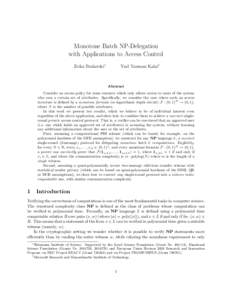<--- Back to Details
| First Page | Document Content | |
|---|---|---|
 Date: 2018-05-13 02:26:15Computational complexity theory Cryptography Complexity classes Theory of computation NP IP Advice PP P Soundness Commitment scheme Certificate |
Add to Reading List |
| First Page | Document Content | |
|---|---|---|
 Date: 2018-05-13 02:26:15Computational complexity theory Cryptography Complexity classes Theory of computation NP IP Advice PP P Soundness Commitment scheme Certificate |
Add to Reading List |